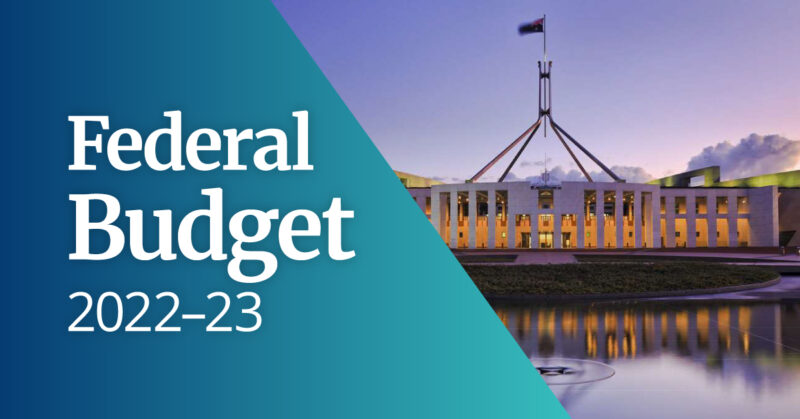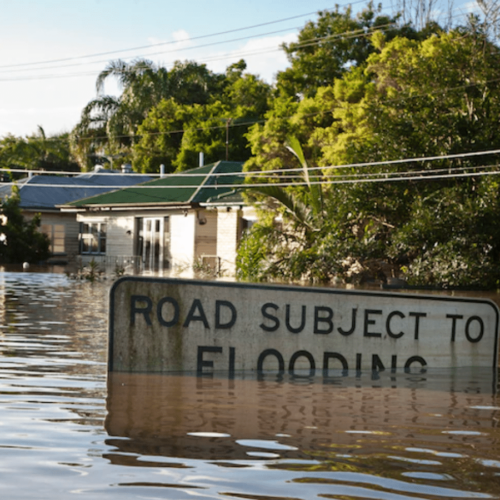On Tuesday 9 May, Treasurer Jim Chalmers handed down the Federal Budget for 2023/24, which was eagerly awaited given increasing cost of living pressures and recent interest rate rises impacting the financial situation of many Australians.
The government announced a small surplus of $4.2 billion this financial year, the first in 15 years. The turnaround from the $36.9 billion deficit projected in October 2022 was driven by high commodity prices, a strong jobs market and a boost in net migration.
The numbers
Some of the key numbers announced include:
- A surplus of $4.2 billion for 2022/23.
- A forecast deficit of $13.9 billion for 2023/24.
- GDP growth of 3.25% in 2022/23.
- Inflation expected to drop from 6% to 3.25% in 2023/24.
- Unemployment expected to rise to 4.25% in 2023/24.
- Net debt of $548.6 billion in 2022/23.
- Wage growth of 4% forecast for 2023/24.
Cost of living relief
The Budget included a $14.6 billion cost of living relief package over four years.
Electricity bills: The government is partnering with state and territory governments to deliver up to $3 billion of electricity bill relief for eligible households and small businesses. From July 2023, this plan will deliver up to $500 in electricity bill relief for eligible households and up to $650 for eligible small businesses. Average national retail electricity prices are now forecast to rise by around 10% in 2023/24.
Health costs:
The government is investing $3.5 billion over five years to make it easier and cheaper to see a doctor and strengthen the foundations of Medicare. The bulk billing incentive will be tripled for the most common consultations with children under the age of 16, pensioners and other Commonwealth concession card holders. This includes face‑to‑face, telehealth and videoconference consultations. More than 300 Pharmaceutical Benefits Scheme medicines will be dispensed in greater amounts, phased in from 1 September 2023.
Superannuation
The government will reduce the tax concessions available to individuals with a total superannuation balance exceeding $3 million, from 1 July 2025. It will bring the headline tax rate to 30%, up from 15%, for earnings on an individual’s total superannuation balance which is greater than $3 million. Those with a total superannuation balance of less than $3 million will not be affected. This measure is expected to impact around 80,000 individuals.Currently, employers are only required to pay their employees’ Superannuation Guarantee (SG) on a quarterly basis. From 1 July 2026, employers will be required to pay their employees’ SG entitlements on the same day that they pay salary and wages.
Small business
The government has pledged to improve cash flow and reduce compliance costs for small businesses by temporarily increasing the instant asset write-off threshold to $20,000, from 1 July 2023 until 30 June 2024.
Small businesses, with aggregated annual turnover of less than $10 million, will be able to immediately deduct the full cost of eligible assets costing less than $20,000 that are first used or installed ready for use between 1 July 2023 and 30 June 2024. The $20,000 threshold will apply on a per asset basis, so small businesses can instantly write off multiple assets.
Housing
The government has brought together states and territories, the Australian Local Government Association, investors and the construction sector through the National Housing Accord, with a shared ambition to boost supply and build one million new homes from 2024.Maximum rates of Commonwealth Rent Assistance will increase by 15%, the largest increase to Commonwealth Rent Assistance in over three decades.
Aged Care
This Budget allocates $11.3 billion to support the Fair Work Commission’s decision to provide an interim increase of 15% to award wages for many aged care workers. More than 250,000 workers will benefit from the decision.
Renewable energy
This Budget accelerates investment in renewable energy through the Capacity Investment Scheme, which will unlock over $10 billion of investment in our grid.The government’s $2 billion ‘Hydrogen Headstart’ will accelerate large‑scale renewable hydrogen projects, aiming to position Australia as a world leading hydrogen producer and exporter.
National Reconstruction Fund
The Government has committed $15 billion to the National Reconstruction Fund, one of the largest investments in manufacturing in Australia’s history. The National Reconstruction Fund will partner with the private sector to invest in priority areas that leverage Australia’s natural and competitive strengths in renewables and low emissions technologies, medical science, transport, value‑add in agriculture, forestry, and fisheries, value‑add in resources, defence capability and enabling capabilities.
Supporting you
We can help with any additional information you require about the 2023 Budget and what the announcements might mean for your financial situation.
Please contact your 4Front Principal, Manager or Advisor if you have any questions.







